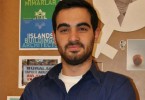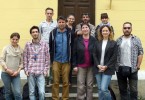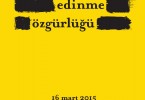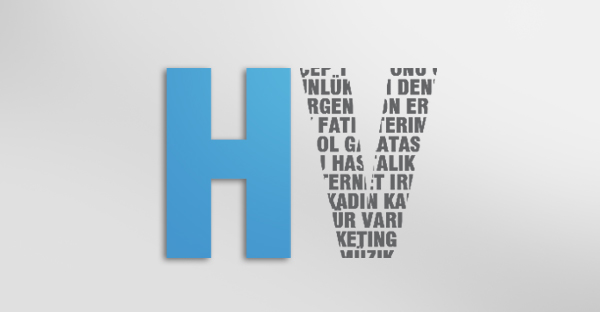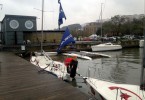Piotr Zareba
Pera Museum used to attract attention with its exhibitions of significant artists. This time we can discover Marc Chagall’s Life and Love, collection of prints, drawings and paintings.
The exhibition is an evidence of artist’s stormy life. His Jewish descent was the reason of his numerous migrations. “When we escape from Russia we first went to Istanbul. After we spent a few years there, we went to Paris and Rome,” wrote Chagall. “I know Constantinople… I mean, I know Istanbul very well. We lived there for two years on Büyükada, in a wooden house. We could see the other islands from there.”
The exhibition contains illustrations of his autobiography My life written in the early twenties in Moscow. They are Chagall’s exploration into his Jewish-Russian origins, happy childhood in beloved family town Vitebsk and artistic experiences in Paris. His drypoint and gouache self portraits show his nature, his weaknesses, concerns and the way he perceived himself. We can look into his multi-faceted personality shaped by places he was forced to live in.
Apart from reflection of Chagall’s life, the exhibition gives the visitor the chance of seeing his illustrations for The Fables by La Fontaine, Dead Souls by Nikolai Gogol and books written by Bella Chagall, the artist’s first wife. We can also witness his extraordinary illustrations he made for the Bible. Thanks to his Slavic spirit, Jewish tradition and his deforming style of painting, they surprisingly differ from the common, traditional way of depicting biblical scenes. It is very hard to categorize Chagall as an artist. His artworks range between Fauvism, Cubism, Symbolism and even Surrealism. Moreover, the artist used to add elements of Eastern European Jewish folk culture, which made him an independent and outstanding artist.
The Chagall exhibition at the Pera Museum is the latest in a series of very impressive displays that the museum has introduced into Istanbul’s cultural life. In the short history of the gallery we could have seen drawings of Akira Kurosawa, paintings and sculptures of Juan Miró and works of Rembrandt. Pera Museum is sponsored by the Suna and İnan Kıraç Foundation, the goals of which are contributing to the society in education, culture and healthcare. The first step in the cultural field was funding Pera Museum in 2005 in a renovated historical building.
The building at Tepebaşı was built in 1893 according to a design by architect Achille Manoussos. That area, concentrated around Istiklal Caddesi, used to be very prestigious in the latter half of 19th century. Full of embassies, hotels and expensive shops was inhabited by foreigners from Europe. Suna İnan Kıraç Foundation has bought the old Bristol Hotel in 2002 and renovated the abandoned building, adapting it to a modern museum.
The plans of the foundation also include projects for the future. It commissioned the world famous architect Frank Gehry to design new cultural center in Tepebaşı, in the place where now the TRT studios are located across from the Pera Museum. The building may become a new icon of Istanbul, just like it happened elsewhere with Gehry’s previous deconstructivist projects (like Guggenheim Museum in Bilbao or Dancing House in Prague) but may bring about many controversies as well.
Modern life comes back to Tepebaşı in Istanbul thanks to Suna İnan Kıraç Foundation’s contribution to art. “I have good memories of that place,” says Marc Chagall about Istanbul, “I would like to reminisce”. And now, Foundation’s love for art lets the artist to come back to Bosporus.
Life and Love, Prints, Drawings and Paintings, Pera Museum, 23.10.2009 – 24.01.2010



